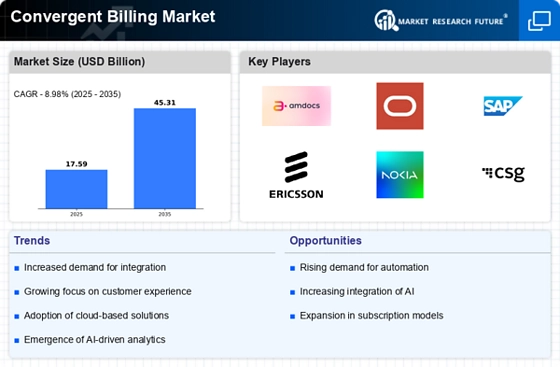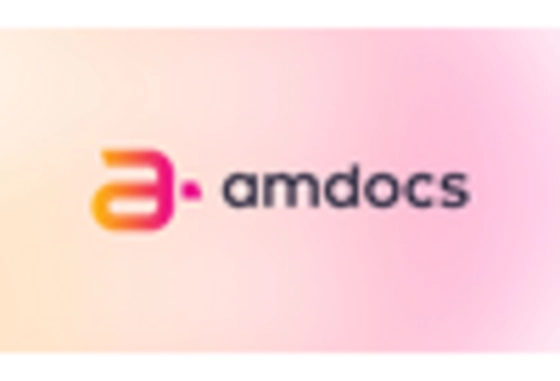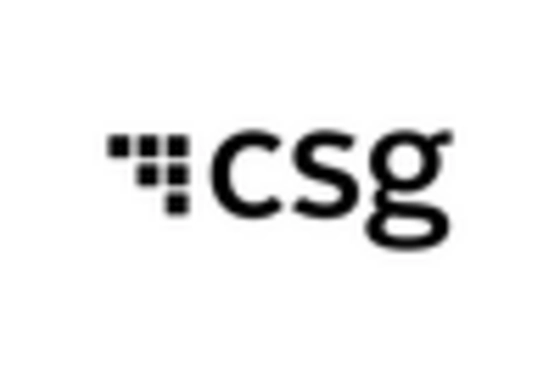Focus on Customer Experience
In the Convergent Billing Market, there is a growing emphasis on enhancing customer experience through streamlined billing processes. Companies are recognizing that a positive billing experience can significantly impact customer satisfaction and loyalty. As a result, businesses are investing in user-friendly interfaces and transparent billing practices. Data indicates that organizations that prioritize customer experience in their billing systems see a 20 percent increase in customer retention rates. This focus on customer-centric billing solutions is likely to drive competition within the Convergent Billing Market, as companies strive to differentiate themselves through superior service.
Shift Towards Subscription Models
The Convergent Billing Market is witnessing a significant shift towards subscription-based models across various sectors. This transition is driven by the increasing demand for flexible payment options and the need for businesses to offer recurring revenue streams. Subscription models allow companies to provide continuous services while ensuring predictable cash flow. Recent statistics suggest that subscription-based revenue is expected to account for over 70 percent of total revenue in certain industries by 2026. This shift not only enhances customer retention but also creates opportunities for innovative billing solutions tailored to subscription services, thereby propelling the Convergent Billing Market forward.
Integration of Advanced Technologies
The Convergent Billing Market is experiencing a notable transformation due to the integration of advanced technologies such as artificial intelligence and machine learning. These technologies enhance billing processes by automating tasks, reducing errors, and improving efficiency. As organizations increasingly adopt these technologies, they can analyze customer data more effectively, leading to personalized billing solutions. According to recent data, the adoption of AI in billing systems is projected to grow by over 30 percent in the next few years. This trend indicates a shift towards more intelligent billing solutions that can adapt to customer needs, thereby driving growth in the Convergent Billing Market.
Emergence of Digital Payment Solutions
The Convergent Billing Market is being significantly shaped by the emergence of digital payment solutions. As consumers increasingly prefer digital transactions, businesses are compelled to adapt their billing systems to accommodate various payment methods, including mobile wallets and cryptocurrencies. This trend is supported by data showing that digital payment transactions are expected to grow by over 25 percent annually. The integration of diverse payment options not only enhances customer convenience but also streamlines the billing process, thereby fostering growth in the Convergent Billing Market. Companies that embrace these digital solutions are likely to gain a competitive edge.
Regulatory Compliance and Data Security
The Convergent Billing Market is increasingly influenced by the need for regulatory compliance and data security. As data breaches become more prevalent, organizations are compelled to adopt robust billing systems that ensure compliance with regulations such as GDPR and PCI DSS. This necessity not only protects customer data but also builds trust and credibility in the market. Recent reports indicate that companies investing in secure billing solutions experience a 15 percent reduction in compliance-related costs. Consequently, the focus on regulatory compliance and data security is likely to drive innovation and investment in the Convergent Billing Market.

















Leave a Comment